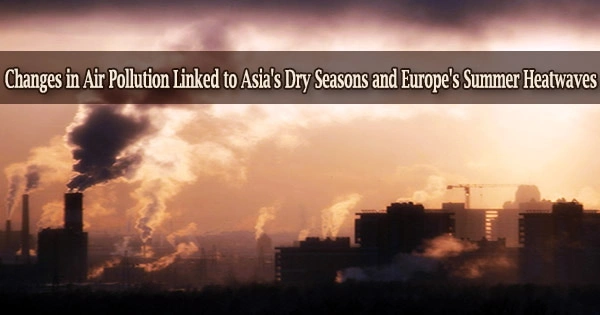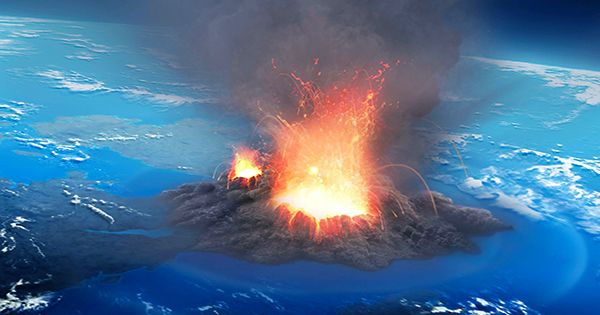According to new research, air pollution rises in Southeast Asia, paired with pollution reductions in Europe, may have had a significant impact on European and Asian weather patterns in recent decades.
Air pollution is any chemical, physical, or biological factor that contaminates the indoor or outdoor environment and alters the natural properties of the atmosphere. Household combustion devices, motor vehicles, industrial operations, and forest fires commonly caused air pollution.
Changes in air pollution levels in the two regions were likely the primary driving force behind changing atmospheric conditions that favored prolonged summer extremes in Europe and caused dry spells in Central Asia, according to scientists at the University of Reading’s analysis of weather records and climate models.
Particulate matter, carbon monoxide, ozone, nitrogen dioxide, and sulfur dioxide are all serious public health concerns. Air pollution, both outside and inside, causes respiratory and other ailments, as well as being a significant source of morbidity and mortality.
According to new research published in Nature Communications, air pollution changes between 1979 and 2019 reduced the temperature gradient between the two locations, weakening the jet stream over Asia significantly.
These high-altitude winds have a significant impact on atmospheric circulation in the Northern Hemisphere and help to form weather in Europe and other mid-latitude regions.
As South East Asian countries fulfill commitments to cut their air pollution levels over the coming decades, we would expect to see the jet stream strengthen over Eurasia once again, potentially reducing the likelihood of prolonged heatwaves but increasing the likelihood of strong cyclones in mid-latitudes.
Dr. Buwen Dong
Dr. Buwen Dong, an NCAS scientist at the University of Reading, said: “Our findings suggest changes to air pollution had a greater influence on Northern Hemisphere summer weather than we thought.”
“The research counters previous suggestions that the weakening of the summer jet stream was the result of rapid warming in the Arctic due to greenhouse gas emissions. It highlights another significant role human activity plays in driving extreme weather over vast regions.”
Because pollution particles hinder heat from the sun from getting to the ground, air pollution is known to have a direct impact on surface temperatures.
Pollution increases in China and other parts of South and East Asia over the last 40 years have resulted in lower surface temperatures, whereas pollution reductions in Europe have resulted in clearer skies and warmer temperatures.
Temperature changes at various latitudes lowered vertical wind shear, weakening the midsummer Eurasian subtropical westerly jet, a ribbon of wind that stretches east from the North Atlantic Jet Stream into Central Asia and northern China, by 7% over the period.
Large cities in impoverished and developing countries have significantly higher levels of air pollution than cities in industrialized countries. The World Health Organization (WHO) lists Karachi, Pakistan, New Delhi, India, Beijing, China, Lima, Peru, and Cairo, Egypt as some of the world’s most polluted cities. However, air pollution is a concern in many wealthy countries. Smog City is a nickname for Los Angeles, California.
The researchers looked at the effects of greenhouse gases and pollution particles individually and discovered that the former really causes the jet stream to strengthen, but that the latter is swamped by air pollution’s effects.
Globally, air quality is inextricably tied to the earth’s climate and ecosystems. Many of the factors that contribute to air pollution (such as the burning of fossil fuels) also contribute to greenhouse gas emissions.
Dr. Dong said: “As South East Asian countries fulfill commitments to cut their air pollution levels over the coming decades, we would expect to see the jet stream strengthen over Eurasia once again, potentially reducing the likelihood of prolonged heatwaves but increasing the likelihood of strong cyclones in mid-latitudes.”
Animals, like humans, are susceptible to the health impacts of air pollution. Air pollution has been linked to birth abnormalities, illnesses, and lower reproductive rates.
As a result, policies to reduce air pollution are a win-win strategy for both climate and health, lessening the burden of disease caused by air pollution while also helping to climate change mitigation in the short and long run.
















